Ascites and Heart Failure: Hemorrhagic Ascites as a Complication of Heart Failure
What are the underlying causes of comorbid liver disease and congestive heart failure? What other diseases place patients at risk for liver involvement similar to CHF? How do the effects on the liver differ depending on whether the right or left portion of the heart is affected? What are the common clinical findings suggestive of associated liver disease in CHF? How is primary liver disease differentiated from CHF-associated liver disease?
Underlying Causes of Comorbid Liver Disease and Congestive Heart Failure
Individuals with cardiovascular disease, such as congestive heart failure (CHF), are often obese and may also have nonalcoholic steatohepatitis, which can be related to a history of obesity as well as insulin-dependent diabetes. Other causes of comorbid liver disease and CHF include any diseases or conditions that might reduce the liver reserve, such as viral hepatitis or alcohol abuse. Additionally, cirrhosis or diseases like hepatic venous thrombosis (e.g., Budd-Chiari syndrome) can make the liver more susceptible to ischemia due to reduced cardiac output in CHF, as the hepatic blood flow is reduced.

Diseases That Place Patients at Risk for Liver Involvement Similar to CHF
Pulmonary conditions, such as chronic obstructive pulmonary disease and obstructive sleep apnea, can place patients at risk for liver involvement due to passive congestion of the liver as a result of an increase in right-sided pressures. These patients tend to have lower arterial oxygenation compared to those with CHF, leading to hypoxic hepatitis versus ischemic hepatitis seen in patients with CHF. Patients with such pulmonary conditions have been found to have more dramatic manifestations of liver disease than those with CHF.
Effects on the Liver Based on Right or Left Heart Involvement
Studies have examined clinical and histologic evidence of ischemic hepatitis in terms of left-versus-right–sided cardiac disease. While right atrial pressures and the degree of zone 3 necrosis on histologic sections in patients with CHF are not correlated, histologic evidence of necrosis is correlated with acute left-sided heart failure. However, in clinically apparent ischemic hepatitis, more than 90% of patients have some right-sided heart failure. This suggests that hepatic congestion secondary to right-sided heart disease may prime the liver for ischemic insults from low cardiac output and reduced hepatic blood flow and oxygenation due to left-sided heart failure. The right and left sides of the heart appear to act cooperatively in clinical and histologic liver disease related to CHF.
:max_bytes(150000):strip_icc()/medical-definition-of-heart-failure-5095799_Final-1897c12bcc254eee8d093c9e6499be1d.jpg)
Common Clinical Findings Suggestive of Associated Liver Disease in CHF
The majority of patients with CHF have at least one manifestation of associated liver disease. For example, 90-95% of patients will have hepatomegaly due to hepatic congestion, and some may experience right upper quadrant pain secondary to stretching of the liver capsule. A smaller percentage of patients, ranging from a few percent up to 25%, will have cardiac ascites. The rate of splenomegaly is 7-20%. Liver function test (LFT) findings are often mild, usually showing alanine aminotransferase and aspartate aminotransferase level elevations at no more than 2 or 3 times the normal limit. Prothrombin time is also not dramatically affected in patients with CHF-related liver disease due to largely preserved synthetic function.
Differentiating CHF-Associated Liver Disease from Primary Liver Disease
There are several clinical characteristics and laboratory tests that help distinguish CHF-related liver disease from primary liver disease. Patients with CHF-associated liver disease rarely have evidence of portosystemic shunts, such as esophageal varices or hemangiomas, in contrast to most other types of primary liver disease with cirrhosis. The ascites associated with CHF, compared to that seen in primary liver disease, tends to have higher lactate dehydrogenase levels, higher protein levels (>2.5 g/dL), and higher red blood cell counts, due to hepatic congestion and leaking of red blood cells into the ascites via lymph tissue, with resulting lysis.
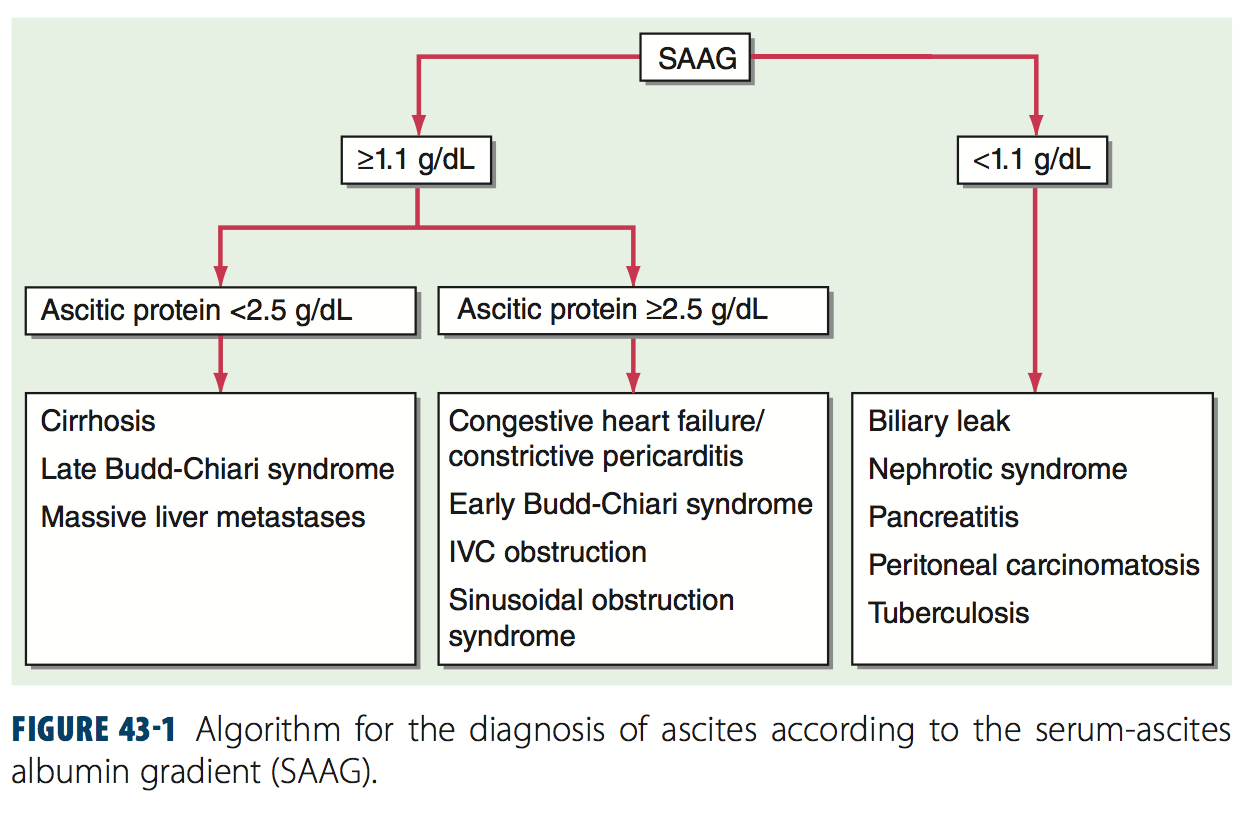
Hemorrhagic Ascites as a Complication of Heart Failure
Hemorrhagic ascites, a rare complication of heart failure, can occur due to the increased hydrostatic pressure and impaired lymphatic drainage caused by right-sided heart failure. This can lead to the leakage of red blood cells into the peritoneal cavity, resulting in bloody or serosanguineous ascites. Proper management of the underlying heart failure is crucial in addressing this complication.
Case Report and Review of the Literature
The article presents a case report and a review of the literature on the topic of hemorrhagic ascites as a complication of heart failure. The case report details the clinical presentation, diagnostic findings, and management of a patient who developed this rare complication. The review of the literature provides further insights into the pathophysiology, epidemiology, and prognosis of this condition, as well as the best practices for its diagnosis and treatment.
Liver Complications in Patients with Congestive Heart Failure – Gastroenterology & Hepatology
Cosmas C. Giallourakis, MD
Assistant Professor of Medicine
Gastroenterology Unit
Department of Medicine
Massachusetts General Hospital
Boston, Massachusetts
G&H What are the underlying causes of comorbid liver disease and congestive heart failure?
CG Individuals with cardiovascular disease, such as congestive heart failure (CHF), are often obese. They may also have nonalcoholic steatohepatitis, which may be related to a history of obesity as well as insulin-dependent diabetes, which also are risk factors for cardiovascular disease. Other causes of comorbid liver disease and CHF include any other diseases or conditions that might reduce the liver reserve, such as viral hepatitis or alcohol abuse. Finally, cirrhosis or diseases such as hepatic venous thrombosis (eg, Budd-Chiari syndrome) can make the liver more susceptible to ischemia—with reduced cardiac output in CHF—because the hepatic blood flow is reduced. Multiple comorbid liver diseases, thus, can exacerbate CHF.
Multiple comorbid liver diseases, thus, can exacerbate CHF.
G&H Are there other diseases that place patients at risk for liver involvement in a way similar to CHF?
CG Pulmonary conditions, such as chronic obstructive pulmonary disease and obstructive sleep apnea, place patients at risk for liver involvement due to passive congestion of the liver as a result of an increase in right-sided pressures. Furthermore, such patients tend to have lower arterial oxygenation compared with patients with CHF, leading to hypoxic hepatitis versus ischemic hepatitis seen in patients with CHF. These patients actually have been found to have more dramatic manifestations of liver disease than patients with CHF. Liver diseases such as hypoxic hepatitis can be exacerbated by such pulmonary condition(s).
G&H Do effects on the liver differ depending on whether the right or left portion of the heart is affected?
CG Some studies have examined clinical and histologic evidence of ischemic hepatitis in terms of left-versus-right–sided cardiac disease.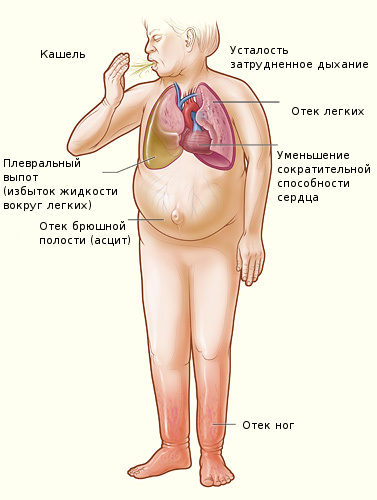 For example, right atrial pressures and the degree of zone 3 necrosis on histologic sections in patients with CHF are not correlated, but histologic evidence of necrosis is correlated with acute left-sided heart failure. It has been observed, however, that in clinically apparent ischemic hepatitis more than 90% of patients have some right-sided heart failure. Thus, it appears that hepatic congestion secondary to right-sided heart disease may prime the liver for ischemic insults from low cardiac output and reduced hepatic blood flow and oxygenation due to left-sided heart failure. The right and left sides of the heart act cooperatively in clinical and histologic liver disease related to CHF.
For example, right atrial pressures and the degree of zone 3 necrosis on histologic sections in patients with CHF are not correlated, but histologic evidence of necrosis is correlated with acute left-sided heart failure. It has been observed, however, that in clinically apparent ischemic hepatitis more than 90% of patients have some right-sided heart failure. Thus, it appears that hepatic congestion secondary to right-sided heart disease may prime the liver for ischemic insults from low cardiac output and reduced hepatic blood flow and oxygenation due to left-sided heart failure. The right and left sides of the heart act cooperatively in clinical and histologic liver disease related to CHF.
G&H What are the common clinical findings suggestive of associated liver disease in CHF?
CG A number of published case series have looked into what types of clinical findings occur in CHF. One of the largest case series was published about 15 years ago and included 175 patients. These series found that the majority of patients have at least 1 manifestation. For example, 90–95% of patients will have hepatomegaly because of hepatic congestion. There can be associated right upper quadrant pain secondary to stretching of the liver capsule. A smaller percentage of patients—ranging from a few percent up to 25%—will have cardiac ascites. The rate of splenomegaly is 7–20%. Liver function test (LFT) findings are often mild, usually showing alanine aminotransferase and aspartate aminotransferase level elevations at no more than 2 or 3 times the normal limit. Prothrombin time is also not dramatically affected in patients with CHF-related liver disease due to largely preserved synthetic function.
These series found that the majority of patients have at least 1 manifestation. For example, 90–95% of patients will have hepatomegaly because of hepatic congestion. There can be associated right upper quadrant pain secondary to stretching of the liver capsule. A smaller percentage of patients—ranging from a few percent up to 25%—will have cardiac ascites. The rate of splenomegaly is 7–20%. Liver function test (LFT) findings are often mild, usually showing alanine aminotransferase and aspartate aminotransferase level elevations at no more than 2 or 3 times the normal limit. Prothrombin time is also not dramatically affected in patients with CHF-related liver disease due to largely preserved synthetic function.
G&H How is primary liver disease differentiated from CHF-associated liver disease?
CG There are a number of clinical characteristics as well as laboratory tests that help distinguish CHF-related liver disease from primary liver disease due to the former’s distinct pathophysiology.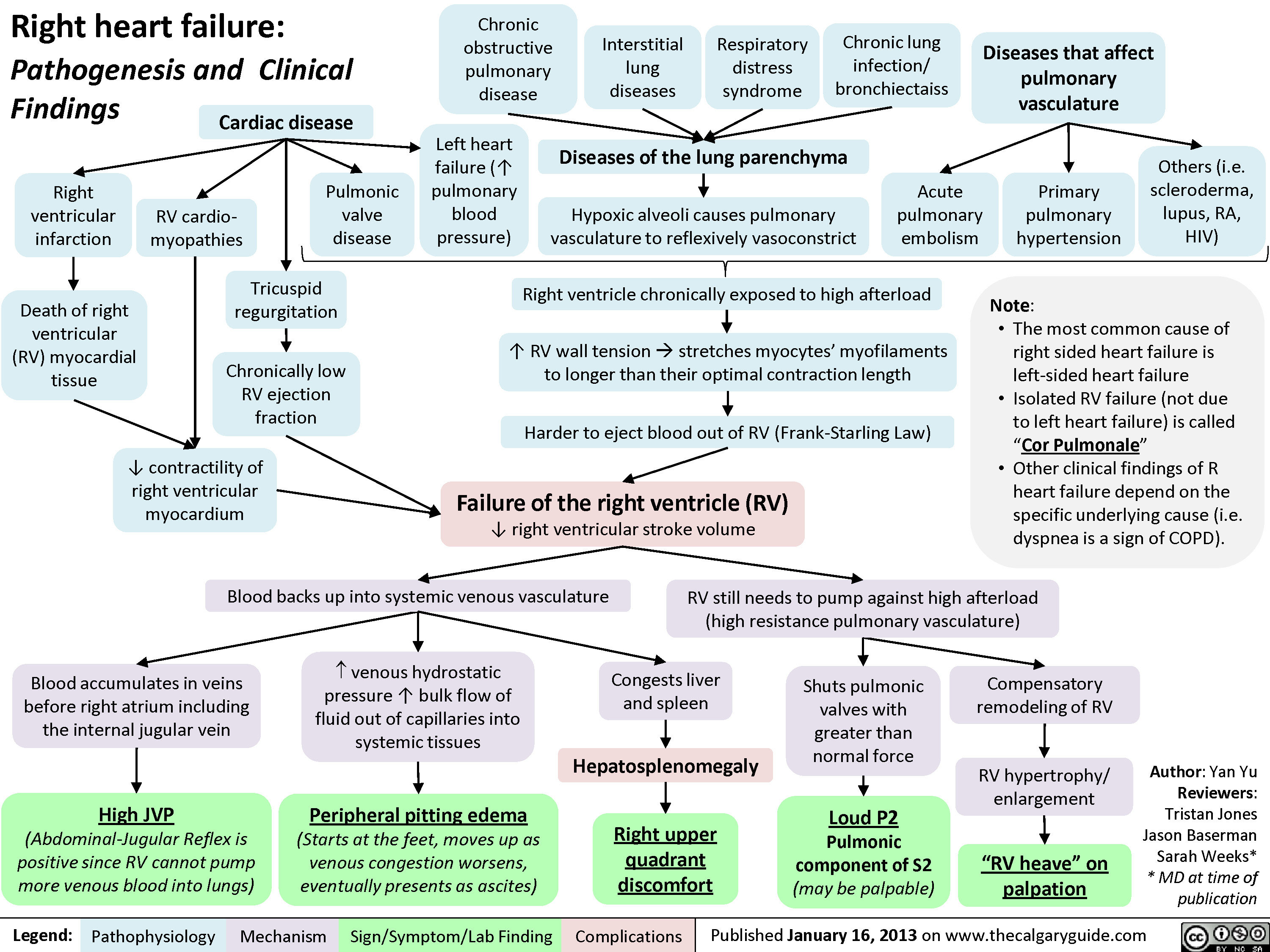 For example, patients with CHF-associated liver disease rarely have evidence of portosystemic shunts, such as esophageal varices or hemangiomas. This is in contrast to just about every other type of primary liver disease with cirrhosis. The ascites associated with CHF compared with that seen in primary liver disease tends to be associated with higher lactate dehydrogenase levels, higher protein levels in the ascites (>2.5 g/dL), and higher red blood cell counts (RBCs). These parameters are seen in cardiac ascites as opposed to ascites of primary liver disease due to hepatic congestion and leaking of RBCs into the ascites via lymph tissue, with resulting lysis in the setting of preserved synthetic function (Figure 1). Jaundice is relatively uncommon in CHF-related liver disease. Only about 5% of patients with hepatic disease and CHF will have clinically overt jaundice, but up to 70% of patients may have a mild increase in unconjugated bilirubinemia (<3 g/dL total bilirubin).
For example, patients with CHF-associated liver disease rarely have evidence of portosystemic shunts, such as esophageal varices or hemangiomas. This is in contrast to just about every other type of primary liver disease with cirrhosis. The ascites associated with CHF compared with that seen in primary liver disease tends to be associated with higher lactate dehydrogenase levels, higher protein levels in the ascites (>2.5 g/dL), and higher red blood cell counts (RBCs). These parameters are seen in cardiac ascites as opposed to ascites of primary liver disease due to hepatic congestion and leaking of RBCs into the ascites via lymph tissue, with resulting lysis in the setting of preserved synthetic function (Figure 1). Jaundice is relatively uncommon in CHF-related liver disease. Only about 5% of patients with hepatic disease and CHF will have clinically overt jaundice, but up to 70% of patients may have a mild increase in unconjugated bilirubinemia (<3 g/dL total bilirubin).
If a question persists about the etiology of the liver disease, a liver biopsy may be revealing. Fibrosis in chronic CHF-associated liver disease manifests as a reverse lobulated pattern characteristic of cardiac cirrhosis with relative sparing of the portal regions (Figure 2). This reverse pattern is due to damage starting in zone 3 of the liver triad in CHF and radiating from the central vein, whereas damage is focused in zone 1 in most primary liver diseases. Thus, there are a number of distinguishing clinical characteristics as well as laboratory and histologic findings that distinguish primary liver disease from CHF-associated liver disease.
Fibrosis in chronic CHF-associated liver disease manifests as a reverse lobulated pattern characteristic of cardiac cirrhosis with relative sparing of the portal regions (Figure 2). This reverse pattern is due to damage starting in zone 3 of the liver triad in CHF and radiating from the central vein, whereas damage is focused in zone 1 in most primary liver diseases. Thus, there are a number of distinguishing clinical characteristics as well as laboratory and histologic findings that distinguish primary liver disease from CHF-associated liver disease.
G&H Should LFTs be routinely performed?
CG LFTs should not be routinely performed to identify or monitor a correlation between liver disease and CHF in the office setting. Furthermore, studies have shown that LFT results vary widely in patients, and researchers were unable to use LFTs to gain information on the type of cardiac dysfunction (ie, right versus left heart dysfunction). Therefore, the literature does not support the routine use of liver function testing in settings regarding CHF beyond monitoring patients for potential treatment-related hepatotoxicity associated with medications. The presence of cardiac disease would not be a primary reason for performing a LFT.
The presence of cardiac disease would not be a primary reason for performing a LFT.
G&H What agents commonly affect liver function in this setting, and, vice versa, what agents are compromised by liver dysfunction?
CG Statins are perhaps the most common class of drugs that can cause hepatic toxicity in patients with cardiac disease. Digoxin, which is metabolized in the liver and regulates cholesterol levels, has a bidirectional impact; it is metabolized by the liver and can affect the metabolism of other compounds in the liver. The antiarrhythmic amiodarone usually does not cause significant liver abnormalities, but computed tomography scans can reveal that a patient may be taking amiodarone because the liver appears hyperintense compared with the spleen. This does not indicate a reason to stop the medication, though. Some data suggest that hepatic disease from CHF can affect warfarin metabolism or other drug levels; however, there is insufficient evidence that CHF-related liver disease has a substantial and clinically meaningful impact on warfarin or other drug levels.
In general, most cardiovascular drugs—certainly most antihypertensive agents and most diuretics—are well tolerated in the presence of modest liver compromise. However, even with these drugs, indirect effects should be considered to prevent, for instance, intravascular depletion with diuretics, which may exacerbate reduced blood flow in an already compromised liver.
G&H How might recognition and care of CHF-associated liver disease be optimized?
CG Most patients in whom chronic CHF disease leads to cardiac cirrhosis on a biopsy do very well clinically regarding overall morbidity and mortality that is not driven by their liver disease. In addition, most patients with acute ischemic hepatitis secondary to CHF with significant hypotension recover well as long as the underlying insult is reversed. The key to managing patients with CHF is optimizing their cardiovascular dynamics. If that is achieved, the liver is going to do well for the most part.
Suggested Reading
Giallourakis CC, Rosenberg PM, Friedman LS. The liver in heart failure. Clin Liver Dis. 2002;6:947-967, viii-ix.
Kubo SH, Walter BA, John DH, Clark M, Cody RJ. Liver function abnormalities in chronic heart failure. Influence of systemic hemodynamics. Arch Intern Med. 1987;147:1227-1230.
Ogawa R, Stachnik JM, Echizen H. Clinical pharmacokinetics of drugs in patients with heart failure: an update (part 1, drugs administered intravenously). Clin Pharmacokinet. 2013;52:169-185.
Richman SM, Delman A, Grob D. Alterations in indices of liver function in congestive heart failure with particular reference to serum enzymes. Am J Med. 1961;31:211-225.
Seeto RK, Fenn B, Rockey DC. Ischemic hepatitis: clinical presentation and pathogenesis. Am J Med. 2000;109:109-113.
Congestive Heart Failure: Stop it Before it Stops You
Congestive heart failure (CHF) is a chronic progressive condition that affects the pumping power of your heart muscle.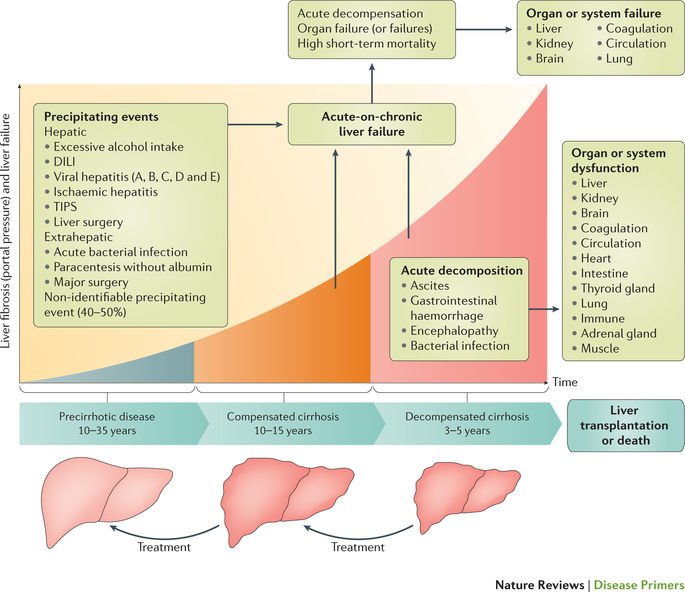 While often referred to as heart failure, CHF specifically refers to the stage in which fluid builds up within the lungs and body due to the weakened heart muscle. As blood flow out of the heart slows, blood returning to the heart through the veins backs up, causing congestion in the body’s tissues. Eventually, blood and other fluids can back up inside of your lungs, abdomen, liver and lower body.
While often referred to as heart failure, CHF specifically refers to the stage in which fluid builds up within the lungs and body due to the weakened heart muscle. As blood flow out of the heart slows, blood returning to the heart through the veins backs up, causing congestion in the body’s tissues. Eventually, blood and other fluids can back up inside of your lungs, abdomen, liver and lower body.
In the early stages of congestive heart failure, you might not experience any symptoms, but, as it goes untreated, you will experience changes in your body.
Symptoms you may first notice:
- Fatigue
- Swelling in your ankles, feet and legs
- Weight gain
- Increased need to urinate, especially at night
Symptoms that indicate your condition has worsened:
- Irregular heartbeat
- A cough that develops from congested lungs
- Wheezing
- Shortness of breath, which may indicate pulmonary edema
- Decreased appetite due to “feeling full”
Symptoms that indicate a severe heart condition:
- Chest pain through the upper body
- Rapid breathing
- Skin that appears blue due to a lack of oxygen in the lungs
- Fainting
If you are experiencing any of these symptoms, visit your primary care provider immediately.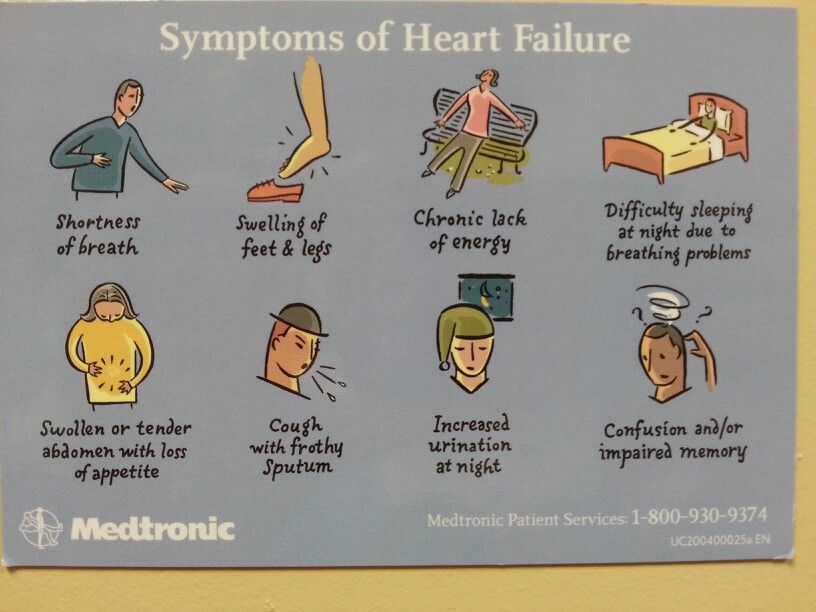
Congestive heart failure may result from conditions that directly affect your cardiovascular system including hypertension (high blood pressure), coronary artery disease and valve conditions. You can also be at risk if you have diabetes, thyroid disease and obesity.
Heart failure is a long-term, chronic condition that gets worse over time. There are four stages of heart failure:
Stage A: Considered pre-heart failure. You are at high risk of developing heart failure because you have one or more of the conditions below:
- Hypertension
- Coronary artery disease
- Diabetes
- History of alcohol abuse
- Family history of heart failure
People at this stage have no problems with the structure of their heart yet from congestive heart failure. They may experience little to no symptoms and if they do, it is usually from one of the conditions above.
Stage B: The structure of the heart starts to be affected at this stage including reduced pumping of the heart and enlarged ventricles. This could also be from a previous heart attack. Oftentimes, you are still asymptomatic at this stage.
This could also be from a previous heart attack. Oftentimes, you are still asymptomatic at this stage.
Stage C: At this stage, you will start showing symptoms of heart failure due to the structural heart disease. These symptoms may include fatigue or breathlessness and usually occur because of a squeezing function of the left ventricle or the pumping of the chamber of the heart.
Stage D: This stage is severe, and people will have advanced structural heart disease and display symptoms, even while they are at rest. At this stage, you will need specialized treatment.
There are a few types of heart failure you need to know:
- Left-sided heart failure: The most common type of heart failure is left-sided heart failure. The left side of the heart must work harder to move the same amount of blood around the body. This may cause a fluid buildup in the lungs and make breathing challenging as it progresses. These fluids give congestive heart failure its name.
 There are two types of left-sided heart failure.
There are two types of left-sided heart failure. - Heart failure with reduced ejection fraction (HFrEF), also called systolic failure: The left ventricle loses its ability to contract normally. The heart cannot pump with enough force to push enough blood into circulation.
- Heart failure with preserved ejection fraction (HFpEF), also called diastolic failure (or diastolic dysfunction): The left ventricle loses its ability to relax normally (because the muscle has become stiff). The heart cannot properly fill with blood during the resting period between each beat.
- Right-side heart failure: The heart’s pumping action moves “used” blood that returns to the heart through the veins through the right atrium into the right ventricle. The right ventricle then pumps the blood back out of the heart into the lungs to be replenished with oxygen. Right-sided or right ventricular heart failure usually occurs as a result of left-sided failure.
 When the left ventricle fails, increased fluid pressure is transferred back through the lungs, ultimately damaging the heart’s right side. When the right side loses pumping power, blood backs up in the body’s veins. This usually causes swelling or congestion in the legs and ankles as well as swelling within the abdomen, such as the GI tract and liver (causing ascites).
When the left ventricle fails, increased fluid pressure is transferred back through the lungs, ultimately damaging the heart’s right side. When the right side loses pumping power, blood backs up in the body’s veins. This usually causes swelling or congestion in the legs and ankles as well as swelling within the abdomen, such as the GI tract and liver (causing ascites).
Treatment for congestive heart failure depends on the severity of your condition. Some of the recommended treatments are:
- Self-care – Quitting smoking, physical exercise, weight loss or a low sodium diet
- Medications – Beta blockers, ACE inhibitors, blood pressure support, dietary supplements, diuretics and others
- Devices– Implantable cardioverter defibrillator, cardiac resynchronization therapy and left ventricular assist device (LVAD)
- Surgical Procedures – Percutaneous coronary intervention (PCI, also referred to as angioplasty), coronary artery bypass, valve replacement and, in advanced cases, either a heart transplant or LVAD
Although it can be difficult living with a chronic condition like congestive heart failure, many people learn to manage the symptoms and enjoy full lives. People who report greater levels of improvement and emotional well-being often build new habits around eating better, tracking and managing their symptoms and exercising.
People who report greater levels of improvement and emotional well-being often build new habits around eating better, tracking and managing their symptoms and exercising.
For best long-term success and maintaining a good quality of life, it is important to see a heart failure specialist.
For more information, visit UofLHealth.org to find care or a physician. For additional resources about congestive heart failure, visit Heart.org.
Tags:
Cardiovascular, Health, Heart, Heart Health, Louisville Health Care, UofL Health, Wellness
Ascites. What is Ascites?
IMPORTANT
The information in this section should not be used for self-diagnosis or self-treatment. In case of pain or other exacerbation of the disease, only the attending physician should prescribe diagnostic tests. For diagnosis and proper treatment, you should contact your doctor.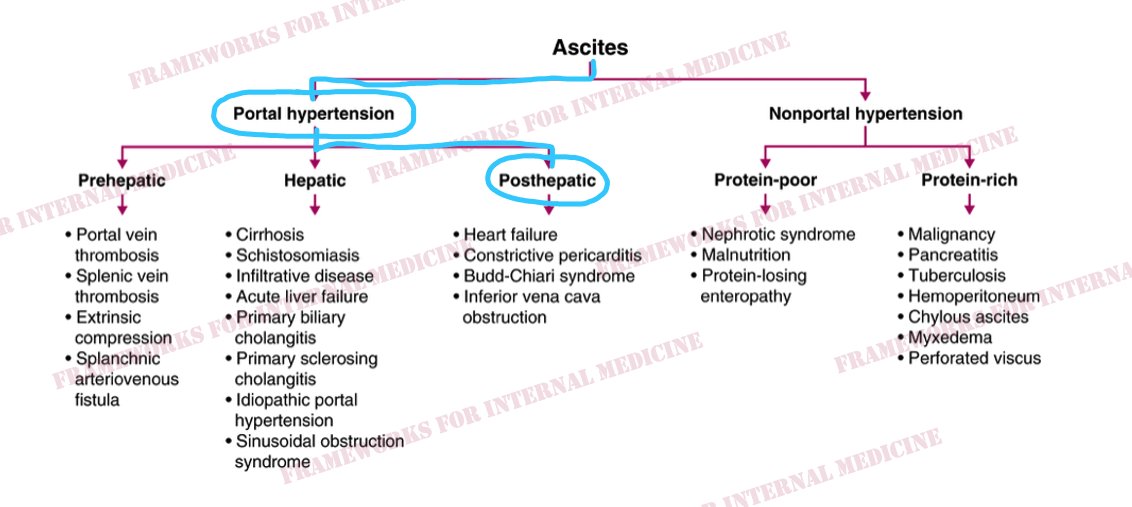
Ascites is a secondary condition characterized by the accumulation of exudate or transudate in the free abdominal cavity. Clinically manifested by an increase in the volume of the abdomen, heaviness, a feeling of fullness and pain in the abdominal cavity, shortness of breath. Diagnosis of ascites includes ultrasound, CT, ultrasound, diagnostic laparoscopy with the study of ascitic fluid. For pathogenetic treatment, it is necessary to establish the cause that caused the accumulation of fluid; symptomatic measures for ascites include the appointment of diuretics, puncture removal of fluid from the abdominal cavity.
ICD-10
R18 Ascites
- Causes of ascites
- Pathogenesis
- Symptoms of ascites
- Diagnostics
- Treatment of ascites
- Prognosis and prevention
- Prices for treatment
General
Ascites or abdominal dropsy can accompany the course of a wide range of diseases in gastroenterology, gynecology, oncology, urology, cardiology, endocrinology, rheumatology, and lymphology. The accumulation of peritoneal fluid in ascites is accompanied by an increase in intra-abdominal pressure, pushing the dome of the diaphragm into the chest cavity. At the same time, the respiratory excursion of the lungs is significantly limited, cardiac activity, blood circulation and the functioning of the abdominal organs are disturbed. Massive ascites may be accompanied by significant protein loss and electrolyte disturbances. Thus, with ascites, respiratory and heart failure, pronounced metabolic disorders can develop, which worsens the prognosis of the underlying disease.
The accumulation of peritoneal fluid in ascites is accompanied by an increase in intra-abdominal pressure, pushing the dome of the diaphragm into the chest cavity. At the same time, the respiratory excursion of the lungs is significantly limited, cardiac activity, blood circulation and the functioning of the abdominal organs are disturbed. Massive ascites may be accompanied by significant protein loss and electrolyte disturbances. Thus, with ascites, respiratory and heart failure, pronounced metabolic disorders can develop, which worsens the prognosis of the underlying disease.
Ascites
Causes of ascites
Ascites in newborns often occurs with fetal hemolytic disease; in young children – with malnutrition, exudative enteropathy, congenital nephrotic syndrome. The development of ascites can accompany various lesions of the peritoneum: diffuse peritonitis of nonspecific, tuberculous, fungal, parasitic etiology; peritoneal mesothelioma, pseudomyxoma, peritoneal carcinosis due to cancer of the stomach, colon, breast, ovaries, endometrium.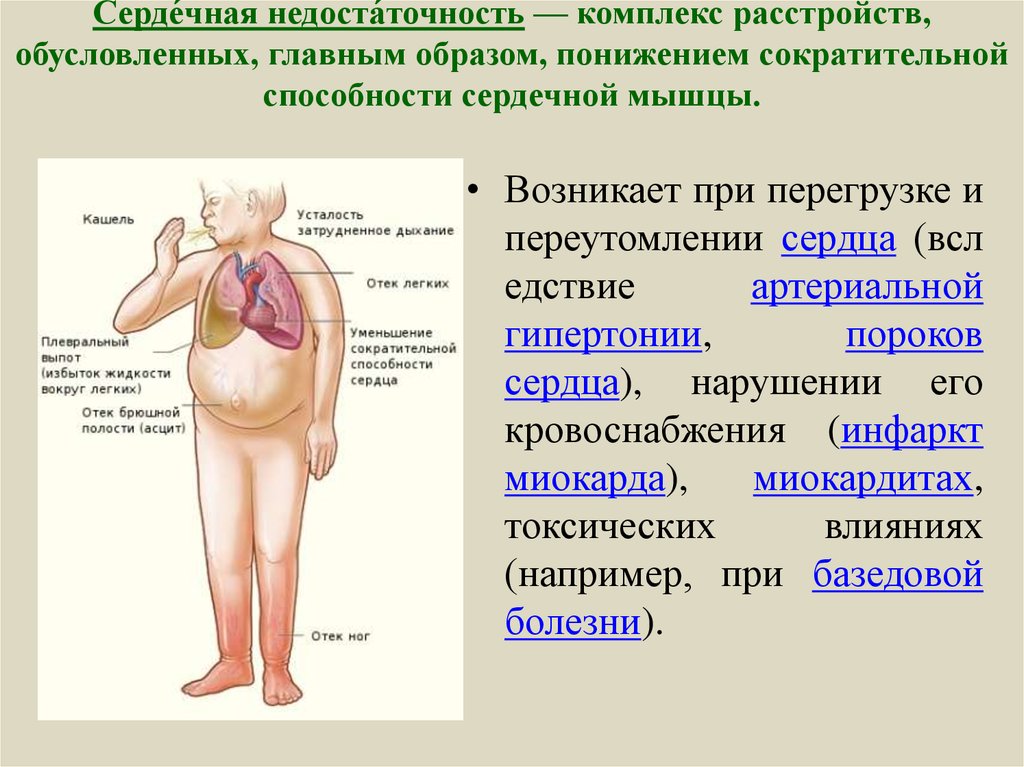
Ascites can be a manifestation of polyserositis (simultaneous pericarditis, pleurisy and dropsy of the abdominal cavity), which occurs in rheumatism, systemic lupus erythematosus, rheumatoid arthritis, uremia, and Meigs syndrome (includes ovarian fibroma, ascites and hydrothorax).
Common causes of ascites are diseases that occur with portal hypertension – an increase in pressure in the portal system of the liver (portal vein and its tributaries). Portal hypertension and ascites may develop due to cirrhosis of the liver, sarcoidosis, hepatosis, alcoholic hepatitis; hepatic vein thrombosis caused by liver cancer, hypernephroma, blood diseases, widespread thrombophlebitis, etc.; stenosis (thrombosis) of the portal or inferior vena cava; venous congestion in right ventricular failure.
Protein deficiency, kidney disease (nephrotic syndrome, chronic glomerulonephritis), heart failure, myxedema, gastrointestinal diseases (pancreatitis, Crohn’s disease, chronic diarrhea), lymphostasis associated with compression of the thoracic lymphatic duct, lymphoangiectasia and difficulty in lymphatic outflow from the abdominal cavity predispose to the development of ascites. .
.
Pathogenesis
Normally, the serous cover of the abdominal cavity – the peritoneum produces a small amount of fluid necessary for the free movement of intestinal loops and the prevention of gluing of organs. This exudate is sucked back by the very same peritoneum. In a number of diseases, the secretory, resorptive, and barrier functions of the peritoneum are impaired, which leads to ascites.
Thus, the pathogenesis of ascites may be based on a complex complex of inflammatory, hemodynamic, hydrostatic, water-electrolyte, metabolic disorders, resulting in interstitial fluid sweating and its accumulation in the abdominal cavity.
Symptoms of ascites
Depending on the causes, the pathology can develop suddenly or gradually, growing over several months. Usually the patient pays attention to the change in the size of clothes and the inability to fasten the belt, weight gain. Clinical manifestations of ascites are characterized by sensations of fullness in the abdomen, heaviness, abdominal pain, flatulence, heartburn and belching, nausea.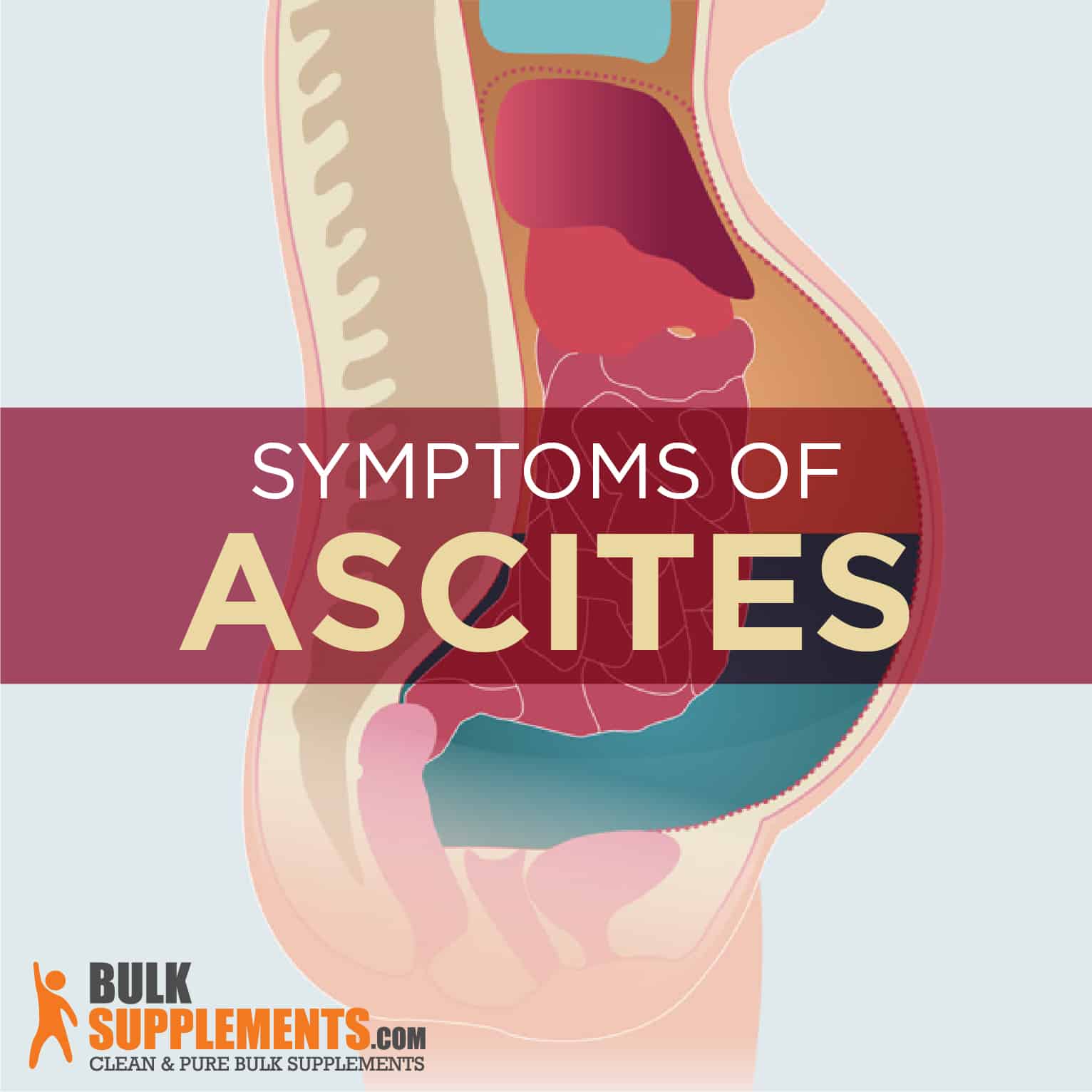
As the amount of fluid increases, the stomach increases in volume, the navel protrudes. At the same time, in the standing position, the stomach looks sagging, and in the prone position it becomes flattened, protruding in the lateral sections (“frog belly”). With a large volume of peritoneal effusion, shortness of breath, swelling in the legs appear, movements are difficult, especially turns and tilts of the body. A significant increase in intra-abdominal pressure in ascites can lead to the development of umbilical or femoral hernia, varicocele, hemorrhoids, rectal prolapse.
Ascites in tuberculous peritonitis is caused by secondary infection of the peritoneum due to genital or intestinal tuberculosis. For ascites of tuberculous etiology, weight loss, fever, and general intoxication are also characteristic. In the abdominal cavity, in addition to ascitic fluid, enlarged lymph nodes along the intestinal mesentery are determined. The exudate obtained from tuberculous ascites has a density of >1016, protein content of 40-60 g/l, a positive Rivalt test, a sediment consisting of lymphocytes, erythrocytes, endothelial cells, contains Mycobacterium tuberculosis.
Ascites accompanying peritoneal carcinosis occurs with multiple enlarged lymph nodes that are palpated through the anterior abdominal wall. Leading complaints in this form of ascites are determined by the localization of the primary tumor. Peritoneal effusion almost always has a hemorrhagic character, sometimes atypical cells are found in the sediment.
In Meigs’ syndrome, patients have ovarian fibroma (sometimes malignant tumors of the ovary), ascites, and hydrothorax. Characterized by abdominal pain, severe shortness of breath. Right ventricular heart failure, occurring with ascites, is manifested by acrocyanosis, swelling of the legs and feet, hepatomegaly, pain in the right hypochondrium, hydrothorax. In renal failure, ascites is combined with diffuse edema of the skin and subcutaneous tissue – anasarca.
Ascites, which develops against the background of portal vein thrombosis, is persistent, accompanied by severe pain, splenomegaly, and minor hepatomegaly. Due to the development of collateral circulation, massive bleeding from hemorrhoids or varicose veins of the esophagus often occurs. Anemia, leukopenia, thrombocytopenia are detected in the peripheral blood.
Due to the development of collateral circulation, massive bleeding from hemorrhoids or varicose veins of the esophagus often occurs. Anemia, leukopenia, thrombocytopenia are detected in the peripheral blood.
Ascites accompanying intrahepatic portal hypertension proceeds with muscular dystrophy, moderate hepatomegaly. At the same time, the expansion of the venous network in the form of a “jellyfish head” is clearly visible on the skin of the abdomen. In posthepatic portal hypertension, persistent ascites is associated with jaundice, severe hepatomegaly, nausea, and vomiting.
Ascites in protein deficiency is usually small; Peripheral hypostases, a pleural exudate are noted. Polyserositis in rheumatic diseases is manifested by specific skin symptoms, ascites, the presence of fluid in the cavity of the pericardium and pleura, glomerulopathy, arthralgia. With impaired lymphatic drainage (chylous ascites), the abdomen rapidly increases in size.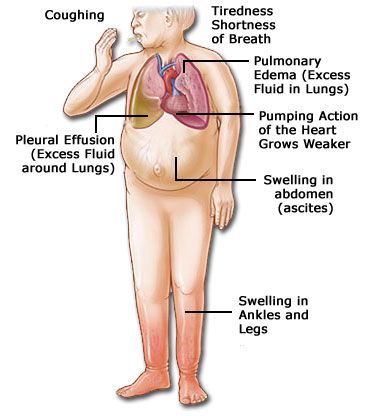 Ascitic fluid has a milky color, pasty consistency; in a laboratory study, fats and lipoids are detected in it. The amount of fluid in the peritoneal cavity with ascites can reach 5-10, and sometimes 20 liters.
Ascitic fluid has a milky color, pasty consistency; in a laboratory study, fats and lipoids are detected in it. The amount of fluid in the peritoneal cavity with ascites can reach 5-10, and sometimes 20 liters.
Diagnostics
During the examination by a gastroenterologist, other possible causes of an increase in the volume of the abdomen are excluded – obesity, ovarian cyst, pregnancy, tumors of the abdominal cavity, etc. To diagnose ascites and its causes, percussion and palpation of the abdomen, ultrasound of the abdominal cavity, ultrasound of venous and lymphatic vessels, MSCT are performed abdominal cavity, liver scintigraphy, diagnostic laparoscopy, examination of ascitic fluid.
CT abdomen C+. Large amounts of fluid in the abdomen (ascites)
Percussion of the abdomen with ascites is characterized by dullness of sound, a shift in the border of dullness with changes in body position. Applying the palm to the lateral surface of the abdomen allows you to feel jolts (a symptom of fluctuation) when you tap your fingers on the opposite wall of the abdomen. Plain radiography of the abdominal cavity allows to identify ascites with a free fluid volume of more than 0.5 liters.
Plain radiography of the abdominal cavity allows to identify ascites with a free fluid volume of more than 0.5 liters.
From laboratory tests for ascites, a study of the coagulogram, biochemical liver tests, levels of IgA, IgM, IgG, and a general urine test is carried out. In patients with portal hypertension, endoscopy is indicated to detect varicose veins of the esophagus or stomach. Chest x-ray may reveal fluid in the pleural cavities, high standing of the bottom of the diaphragm, and limitation of respiratory excursion of the lungs.
During the ultrasound of the abdominal organs with ascites, the dimensions, condition of the tissues of the liver and spleen are studied, tumor processes and lesions of the peritoneum are excluded. Dopplerography allows you to assess blood flow in the vessels of the portal system. Hepatoscintigraphy is performed to determine the absorption-excretory function of the liver, its size and structure, and to assess the severity of cirrhotic changes. In order to assess the state of the splenoportal bed, selective angiography – portography (splenoportography) is performed.
In order to assess the state of the splenoportal bed, selective angiography – portography (splenoportography) is performed.
All patients with ascites, identified for the first time, undergo a diagnostic laparocentesis to collect and study the nature of ascitic fluid: determine the density, cellular composition, amount of protein and bacteriological culture. In difficult to differentiate cases of ascites, diagnostic laparoscopy or laparotomy with targeted biopsy of the peritoneum is indicated.
Treatment of ascites
Pathogenetic treatment requires eliminating the cause of fluid accumulation, i.e., the primary pathology. To reduce the manifestations of ascites, a salt-free diet, restriction of fluid intake, diuretics (spironolactone, furosemide under the cover of potassium preparations) are prescribed, correction of water-electrolyte metabolism disorders and reduction of portal hypertension with the help of angiotensin II receptor antagonists and ACE inhibitors.:max_bytes(150000):strip_icc()/congestive-heart-failure-vs-heart-failure-5212245-Final-3bde2a6f988c4065aff177a075b5256b.jpg) At the same time, the use of hepatoprotectors, intravenous administration of protein preparations (native plasma, albumin solution) is indicated.
At the same time, the use of hepatoprotectors, intravenous administration of protein preparations (native plasma, albumin solution) is indicated.
With ascites that is resistant to ongoing drug therapy, they resort to abdominal paracentesis (laparocentesis) – puncture removal of fluid from the abdominal cavity. For one puncture, it is recommended to evacuate no more than 4-6 liters of ascitic fluid due to the risk of collapse. Frequent repeated punctures create conditions for inflammation of the peritoneum, the formation of adhesions and increase the likelihood of complications in subsequent sessions of laparocentesis. Therefore, with massive ascites for long-term evacuation of fluid, a permanent peritoneal catheter is installed.
Interventions that provide conditions for the direct outflow of peritoneal fluid include a peritoneovenous shunt and partial deperitonization of the abdominal walls. Indirect interventions for ascites include operations that reduce pressure in the portal system. These include interventions with the imposition of various porto-caval anastomoses (porto-caval shunting, transjugular intrahepatic portosystemic shunting, reduction of splenic blood flow), lymphovenous anastomosis. In some cases, with refractory ascites, a splenectomy is performed. For resistant ascites, liver transplantation may be indicated.
These include interventions with the imposition of various porto-caval anastomoses (porto-caval shunting, transjugular intrahepatic portosystemic shunting, reduction of splenic blood flow), lymphovenous anastomosis. In some cases, with refractory ascites, a splenectomy is performed. For resistant ascites, liver transplantation may be indicated.
Prognosis and prevention
The presence of ascites significantly aggravates the course of the underlying disease and worsens its prognosis. Complications of ascites itself can be spontaneous bacterial peritonitis (SBP), hepatic encephalopathy, hepatorenal syndrome, bleeding. Unfavorable prognostic factors in patients with ascites include age over 60 years, hypotension (below 80 mmHg), renal failure, hepatocellular carcinoma, diabetes mellitus, cirrhosis of the liver, hepatocellular insufficiency, etc. According to experts in the field of clinical gastroenterology, a two-year the survival rate for ascites is about 50%.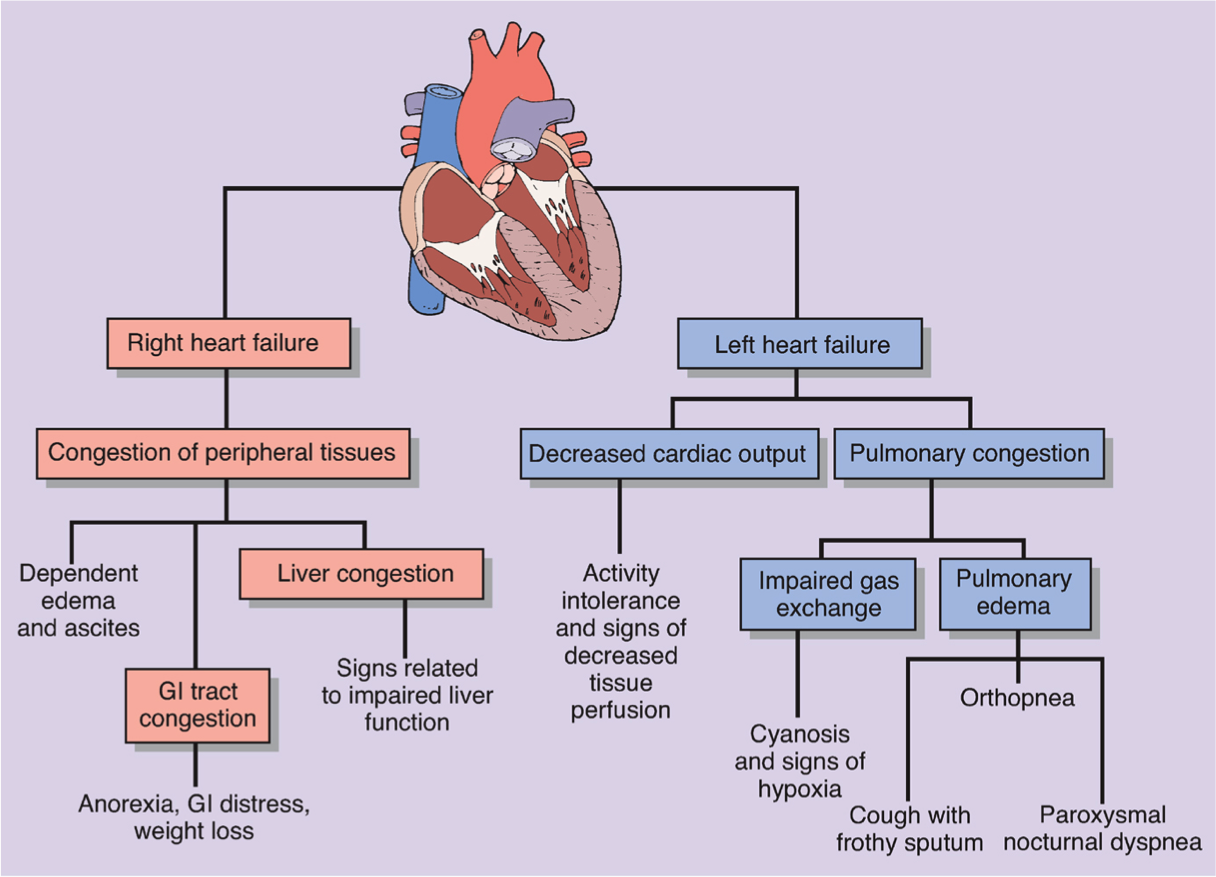
You can share your medical history, what helped you in the treatment of ascites.
Sources
- self-treatment. In case of pain or other exacerbation of the disease, only the attending physician should prescribe diagnostic tests. For diagnosis and proper treatment, you should contact your doctor.
Congestive heart failure in cats and dogs
Congestive heart failure occurs with a serious heart condition where the cardiovascular system is no longer able to function normally.
The function of the heart is like a water pump. If the basement water pump stops pumping water out of the foundation during heavy rain, the basement fills with water. This happens in the body of a sick animal.
When the left side of the heart stops pumping adequately, the lungs fill with blood, and if the right side does the same with the abdominal and/or chest cavity. Thus, with left ventricular failure, pulmonary edema occurs, and with right ventricular failure, ascites or hydrothorax occurs.

How serious is congestive heart failure syndrome in cats and dogs?
The most common misconception is that congestive heart failure is an absolutely fatal disease. Although, at present, the prognosis for most cardiac diseases is not long-term, but most animals can live for many months and even years with a more or less stable quality of life. It is important to detect heart disease at an early stage. The earlier treatment is prescribed, the longer the survival rates in cats and dogs with cardiac diseases.
How is congestive heart failure treated in cats and dogs?
Congestive heart failure in cats and dogs is amenable to medical treatment. If your pet’s heart disease progresses and recurs, or congestive heart failure appears, treatment can be continued based on initial observations and, if necessary, specific medical therapy may be added to control clinical signs.
Control of congestive heart failure is generally done in a three-tiered approach:
1.
 Reduce the preload of the heart (the volume of blood that must be pumped) so that it can function more efficiently. For this purpose, it is necessary to prescribe monotherapy or a combination of diuretics (diuretics): lasix (furosemide), spironolactone, hydrochlorothiazide.
Reduce the preload of the heart (the volume of blood that must be pumped) so that it can function more efficiently. For this purpose, it is necessary to prescribe monotherapy or a combination of diuretics (diuretics): lasix (furosemide), spironolactone, hydrochlorothiazide.2. Reduce cardiac afterload (the resistance the heart must overcome to pump blood) by dilating the arteries. For this purpose, it is necessary to prescribe vasodilators: angiotensin-converting enzyme inhibitors (enalapril, benazapril or lisinopril), beta-blockers (norvasc, amplodipine), arterial vasodilators (hydralazine).
3. Increase heart rate and strength: by supporting and improving the functioning of the heart muscle, blood can be pumped out to other vital organs. For this purpose, positive inotropic drugs are used (to enhance the work of the heart muscle), in particular pimobendan (Vetmedin) and digoxin. Digoxin also reduces the heart rate, improving blood circulation in the myocardium and other organs.

What are the prognosis and management of the general condition of a cat or dog with congestive heart failure?
Some dogs may experience increased thirst and frequent urination. If this seems excessive, you should contact the specialists of our clinic – you can change the doses of drugs in order to improve or completely resolve this problem.
Kidney function and electrolyte levels during specific drug therapy should be monitored by serum chemistry. Usually, a veterinarian will provide instructions regarding the frequency and type of blood tests performed.
All drugs have certain side effects, and just like humans, cats and dogs can react completely differently to specific drugs. If you notice that your pet is lethargic, depressed, does not show interest in food, vomiting or diarrhea is observed, then you should contact a specialist at our veterinary clinic.
Most drugs are commonly available and generally well tolerated by small animals.


 There are two types of left-sided heart failure.
There are two types of left-sided heart failure. When the left ventricle fails, increased fluid pressure is transferred back through the lungs, ultimately damaging the heart’s right side. When the right side loses pumping power, blood backs up in the body’s veins. This usually causes swelling or congestion in the legs and ankles as well as swelling within the abdomen, such as the GI tract and liver (causing ascites).
When the left ventricle fails, increased fluid pressure is transferred back through the lungs, ultimately damaging the heart’s right side. When the right side loses pumping power, blood backs up in the body’s veins. This usually causes swelling or congestion in the legs and ankles as well as swelling within the abdomen, such as the GI tract and liver (causing ascites).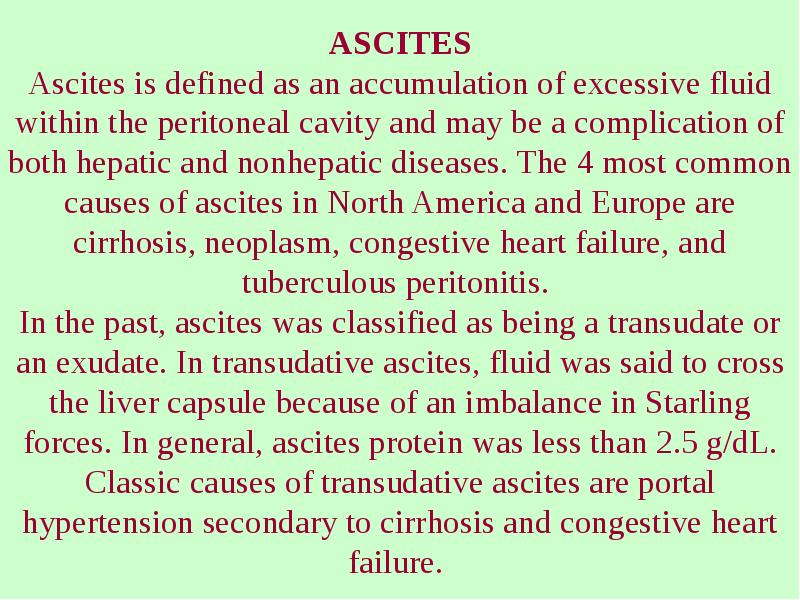
 Reduce the preload of the heart (the volume of blood that must be pumped) so that it can function more efficiently. For this purpose, it is necessary to prescribe monotherapy or a combination of diuretics (diuretics): lasix (furosemide), spironolactone, hydrochlorothiazide.
Reduce the preload of the heart (the volume of blood that must be pumped) so that it can function more efficiently. For this purpose, it is necessary to prescribe monotherapy or a combination of diuretics (diuretics): lasix (furosemide), spironolactone, hydrochlorothiazide.
